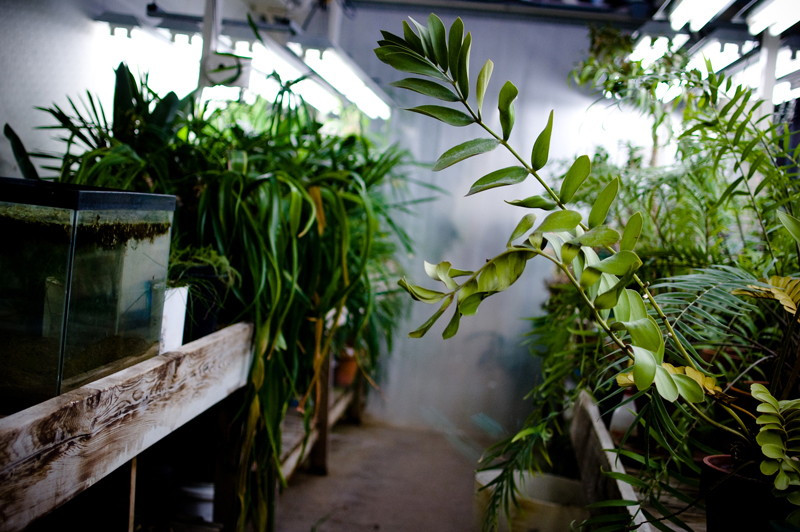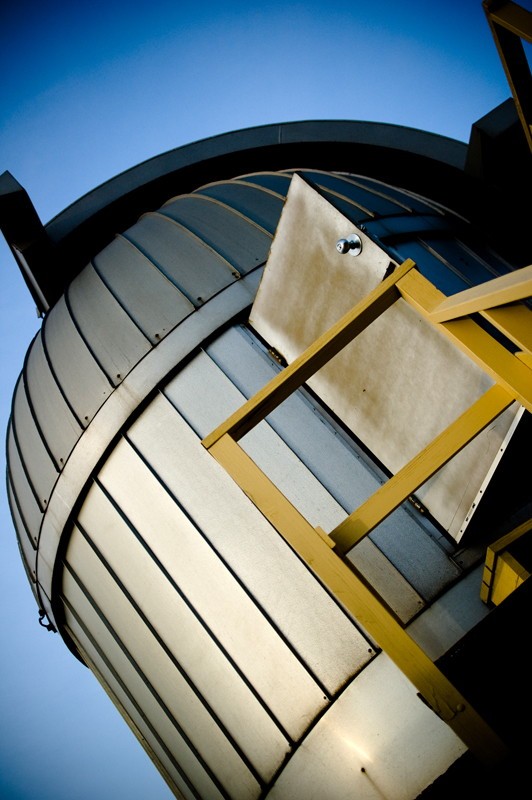Exploring the university’s top floors
Hidden rooms, secret gardens await adventurous students on the school’s upper levels
Know your university: The University of Winnipeg is a quirky place. Although it is a small campus, many areas remain unknown to the average student. This “Know Your University” series will explore the quirky corners and interesting individuals that make this university unique.
Ever wonder what goes on in the halls above the buffeteria? And where exactly does that staircase on the sixth floor of Lockhart Hall go?
The Uniter sent three reporters along with photographers to explore the many hidden nooks and crannies of the University of Winnipeg campus.
The explorers went around the fifth, sixth and seventh floors of the university hoping to get lost in the maze of hallways and mislabelled rooms.
From secluded study areas to infrastructure that doesn’t make sense, there are places for students to hang out and study, as well as specialized rooms for specific research.
Some rooms on the fifth floor were marked with the number “4” on the door. Some doors can only be opened from one side. Others are accessible only by stairs.
If you ever want to find cool hidden places around campus where hardly anyone goes, start with our pictures and then go exploring.
The secret garden: Fifth-floor Centennial houses lush greenhouse
On the fifth floor of Centennial Hall, tucked away deep in the library, is the university’s greenhouse. Home to dozens of endangered and extinct plants from places like India and Ecuador, the greenhouse is a largely unknown treasure.
Karen Jones, a biological technician who has worked in the greenhouse for 23 years, said hardly any students know the greenhouse exists except for botany students reviewing for exams.
Considering the diverse collection of plants housed there, students are missing out, said Jones.
One of the most valued plants in the greenhouse is a Staghorn Fern, a large and unusual looking plant native to New Zealand.
“It’s worth well over $2,000,” said Jones, adding that the plant is the envy of botanical gardens across Canada.
The greenhouse is home to another unique species - Australian walking sticks. The small, scorpion-like insects are housed in a small, clear box near the front of the long, narrow room.
Although the greenhouse has been in the same location since Centennial Hall was built, Jones said it will likely be replaced with a new greenhouse in the new science complex and Richardson College for the Environment.
Star light, star bright, can’t see the stars because of city lights!
Not only does Lockhart hall have a seventh floor, it has a place to star gaze. Built in 1972, the astronomy observatory is home to a 14-inch Celestron telescope, one of the largest in Manitoba, and a day star filter used to observe solar flares.
Despite the impressive equipment, the observatory’s usefulness is limited. Physics professor Dan Campbell said bright city lights make it difficult to see the night sky clearly.
He said the university could have built the observatory outside the city to maximize star-gazing abilities but opted to keep it close to home.
“It was a trade-off,” he said. “They chose convenience over a better sky location.”
Campbell said the moon, major planets, some galaxies and gas clouds can be seen on the right nights with the help of special light filters.
The observatory recently reopened after being closed for a year-and-a-half. The structure that supports the observatory is made entirely of wood, which needed to be replaced.
“It was made in Florida and unfortunately observatories don’t match up with Winnipeg winters,” said Campbell, adding that because of its structural shortcomings the room is closed during the winter and spring months.
Going to the forest for some research? Better take a map from down the hall
The Centre for Forest Interdisciplinary Research (CIFA) is on the fifth floor of Centennial Hall or the mezzanine of the fourth floor (depending on which room you’re going to). CIFA is a centre for students and faculty to work on forest research.
“It provides room for undergraduate and graduate students to learn as it has spacious classrooms,” said director Ed Cloutis.
The centre ranks low on accessibility as it has many one-way doors; however, Cloutis said “a lot of the doors are getting new locks ... the university is upgrading security.”
Whether or not you’re interested in forest health, CIFA has weird but quiet study corners.
Next to CIFA is the map library, tucked away on the fourth floor of Centennial Hall Mezzanine. It contains over 150,000 maps, books, atlases, globes and aerial photos.
“Many students in the university don’t know about the map library,” even though it’s open to students and the public, map librarian Brad Russell said.
The library holds maps for the East European Genealogical Society, so if you need a map to show you where your ancestors came from, the library probably has it.
The library has copies of all the topographic maps that Canada produces as it’s a depository of the National Topographic System of Canada. It’s also a great place to study and is wheelchair accessible. Just call beforehand to arrange an elevator.
Published in Volume 64, Number 9 of The Uniter (October 29, 2009)









